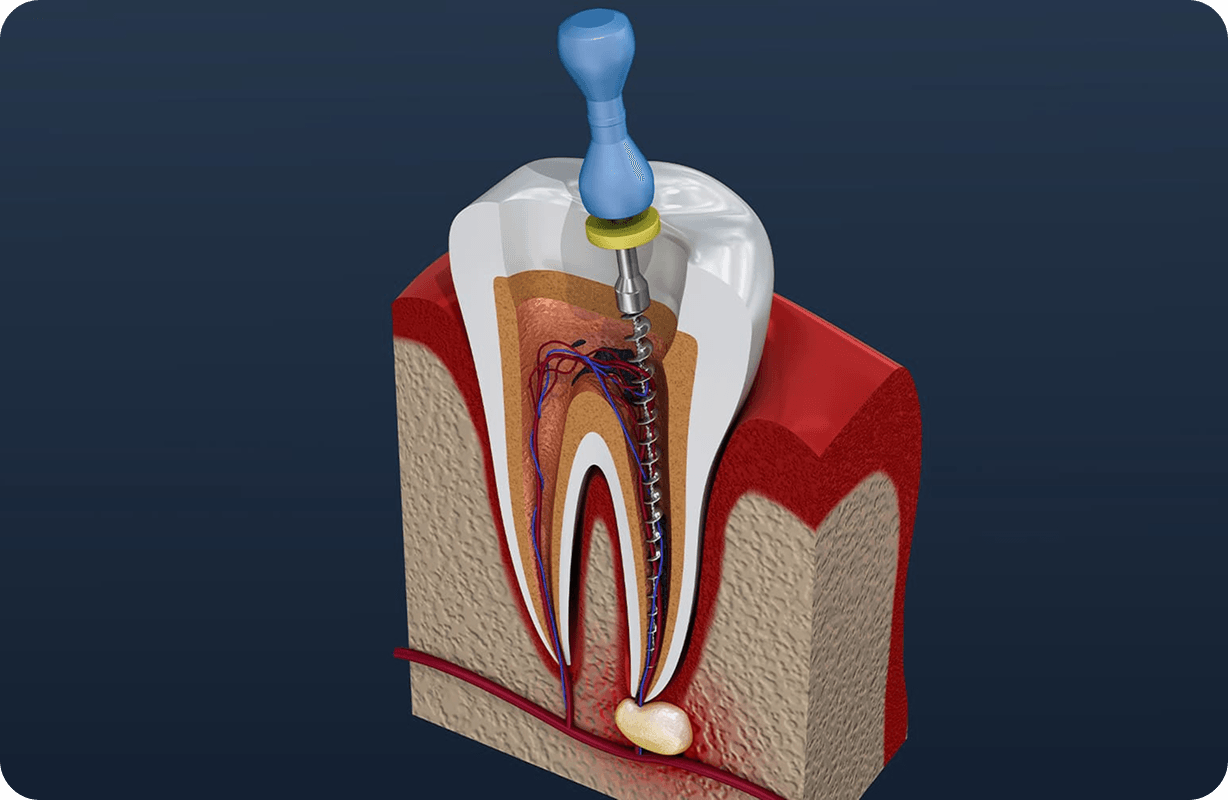Root Canal Therapy

Has your dentist told you that you need root canal treatment? If so, you’re not alone. Millions of teeth are treated and saved each year with root canal, or endodontic, treatment. Learn how root canal treatment can relieve your tooth pain and save your smile.
In the worst cases, teeth are lost. Whether your gum disease is stopped, slowed, or gets worse depends a great deal on how well you care for your teeth and gums every day, from this point forward.

To understand a root canal procedure, it helps to know about the anatomy of the tooth. Inside the tooth, under the white enamel and a hard layer called the dentin, is a soft tissue called the pulp.
The pulp contains blood vessels, nerves and connective tissue, and helps to grow the root of your tooth during development. In a fully developed tooth, the tooth can survive without the pulp because the tooth continues to be nourished by the tissues surrounding it.
How does endodontic treat the inside of the tooth?
Endodontic treatment treats the inside of the tooth. Endodontic treatment is necessary when the pulp becomes inflamed or infected. The inflammation or infection can have a variety of causes: deep decay, repeated dental procedures on the tooth, faulty crowns, or a crack or chip in the tooth.
In addition, trauma to a tooth may cause pulp damage even if the tooth has no visible chips or cracks. If pulp inflammation or infection is left untreated, it can cause pain or lead to an abscess.
How does endodontic treatment save the tooth?
During root canal treatment, the inflamed or infected pulp is removed and the inside of the tooth is carefully cleaned and disinfected, then filled and sealed with a rubber-like material called gutta-percha. Afterwards, the tooth is restored with a crown or filling for protection. After restoration, the tooth continues to function like any other tooth.
Contrary to jokes about the matter, modern root canal treatment is very similar to having a routine filling and usually can be completed in one or two appointments, depending on the condition of your tooth and your personal circumstances. You can expect a comfortable experience during and after your appointment. Saving the natural tooth with root canal treatment has many advantages:
- Efficient chewing
- Normal biting force and sensation
- Natural appearance
- Protects other teeth from excessive wear or strain
Endodontic treatment helps you maintain your natural smile, continue eating the foods you love and limits the need for ongoing dental work. With proper care, most teeth that have had root canal treatment can last as long as other natural teeth and often for a lifetime.
Frequently Asked Questions about
Root Canal Therapy
What services does Beaconhill Smile Clinic provide?
How long will it take to heal after a dental surgery?
Your first visit
Scheduling your first visit at Beaconhill Smile is easy and smooth. Experiencing our modern approach to helping you restore your confidence is even smoother. Weve designed an experience thats convenient and comfortable!
No insurance? Cash, transfers, check, and credit card payments are always accepted.

Previous
Dental Bridges
A dental bridge, also called a “fixed bridge” or a “fixed dental prosthesis,” is a dental restoration that replaces one or more missing teeth.
Next
Dental Braces
Metal braces are the most common type of braces for orthodontic patients…keeping it classic. Made of nickel-free high-grade steel, they are much smaller and more comfortable than those in the past.

Beaconhill (Victoria Island)

Beaconhill (Ikeja)
Beaconhill (Victoria Island)
First Floor, Union Bank Building, 97 Ahmadu Bello Way, Victoria Island, Lagos
Beaconhill (Ikeja)
50-52 Toyin Street, Ikeja, 100271 Lagos, Nigeria.



